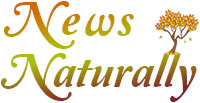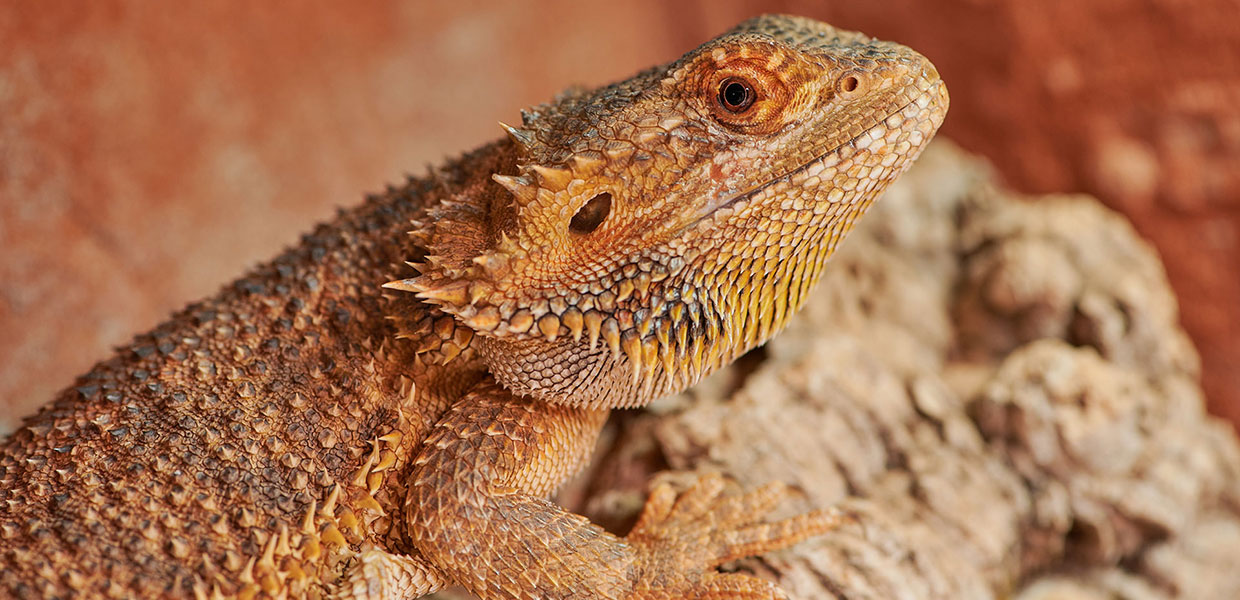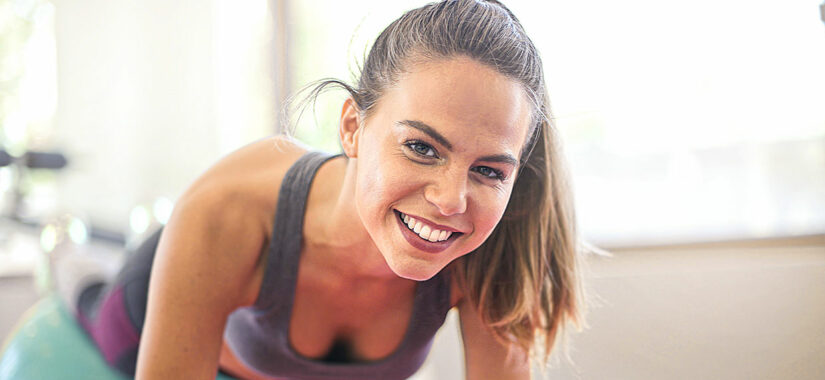Keeping Bearded Dragons as Pets: A Comprehensive Guide
Keeping bearded dragons as pets has become increasingly popular due to their unique appearance, docile nature and ease of care. Native to Australia, these lizards make great companions with a lifespan of around 10-15 years. In this guide, we will cover the basics of caring for a bearded dragon, including the necessary supplies, diet, and housing.
Housing
Providing a suitable and enriching housing environment is crucial for the overall well-being and happiness of your bearded dragon. Here are some important factors to consider:
Tank
Choose a tank or enclosure that provides ample space for your bearded dragon to move around comfortably. A tank made of glass or plastic with smooth sides is ideal. The tank should have a secure lid to prevent your bearded dragon from escaping and to maintain a stable environment inside.
It is important to consider the size of the tank based on the age and expected growth of your bearded dragon. A tank size of at least 90cm x 45cm x 60cm is recommended for adult bearded dragons, but larger enclosures, such as 120cm x 45cm x 60cm, are even better. If you have a juvenile bearded dragon, keep in mind that they will grow, and the tank should provide enough space for their future size.
Enrichment and Decorations
To create a stimulating and engaging environment for your bearded dragon, incorporate various decorations and enrichments in their tank. This will mimic their natural habitat and provide opportunities for physical activity and mental stimulation.
Rocks, branches, and logs can be strategically placed in the tank to create climbing opportunities and basking spots. Ensure that these items are securely positioned to prevent them from falling and potentially injuring your dragon. Be cautious of using materials that may retain heat, as this can lead to burns. Natural materials, such as reptile-safe driftwood, can be great choices.
Additionally, you can include non-toxic plants, such as pothos or spider plants, to add some greenery and create a more natural environment. Just make sure that the plants are safe for your bearded dragon and won’t be ingested.
Provide hiding spots within the tank, such as caves, hollow logs, or purpose-made reptile hides. These hiding spots offer your bearded dragon a sense of security and privacy when they need it. You can also use artificial caves or half-logs specifically designed for reptiles.
By providing a spacious and enriching enclosure, you are creating an environment that promotes physical activity, mental stimulation, and natural behaviours for your bearded dragon. Regularly evaluate and update the decorations and enrichments to keep the habitat engaging and enjoyable for your pet.
Substrates
Substrates refer to the materials that line the bottom of the tank. There are various options available, each with its own advantages and considerations. Here are a few common substrate choices:
Sand: Many bearded dragon owners opt for a fine-grain play sand as a substrate. However, it is important to note that ingestion of sand can lead to impaction, a serious health issue. If you choose sand as a substrate, ensure your bearded dragon is not ingesting it during feeding or habitat exploration.
Paper Towels: Using paper towels as a substrate is a simple and easily replaceable option. It allows for easy cleanup and eliminates the risk of impaction.
Reptile Carpet: Reptile carpet provides a safe and comfortable substrate for your bearded dragon. It is easy to clean and can be reused, making it a popular choice among owners.
When selecting a substrate, consider the age and size of your bearded dragon, as well as their feeding habits and potential risk of ingestion. Consult with a reptile veterinarian or experienced reptile keeper to determine the best substrate option for your specific situation.
Food and Water Dishes
Provide your bearded dragon with shallow dishes for food and water. Choose sturdy dishes that won’t tip over easily to prevent spills and contamination. The food dish should be large enough to accommodate the appropriate portions of food, while the water dish should be shallow to prevent accidental drowning. Clean and refill the dishes regularly to maintain hygiene.
Proper bearded dragon care begins with their enclosure. Design it well from the outset and you will have an easier time maintaining it, while your bearded friend will have a great start at living its best life.
Environment
Creating the right environment is crucial for the well-being of your bearded dragon. As desert animals, they require a warm and dry environment that mimics their natural habitat. Here are some important considerations:
Temperature
To ensure accurate temperature and humidity readings, it is recommended to use reptile-specific thermometers and hygrometers. These devices are designed to provide more accurate measurements in reptile habitats and can help you monitor and maintain the optimal conditions for your bearded dragon.
Maintaining the appropriate temperature gradient in the tank is essential for your bearded dragon’s overall health and digestion. They need a basking spot with temperatures between 38-42 degrees Celsius (100-110 degrees Fahrenheit) to thermoregulate and digest their food properly. The cooler area of the tank should stay between 24-26 degrees Celsius (75-80 degrees Fahrenheit) to provide a comfortable resting space. Regularly check the temperatures throughout the day to ensure they remain within the appropriate range. Adjust the positioning of the heat lamp or use a higher or lower wattage bulb to maintain the desired temperatures.
The hygrometer will help you keep track of the humidity levels within the enclosure, although bearded dragons generally require low humidity levels as they are adapted to arid environments.
In addition to the heat lamp and hygrometer, you may need additional equipment to regulate the temperature and humidity in the tank. Heat mats or ceramic heat emitters can be used in conjunction with the heat lamp to ensure consistent and adequate heating throughout the enclosure. Automatic misting systems or manual misting with a spray bottle can help maintain appropriate humidity levels, although bearded dragons generally require low humidity.
By regularly monitoring the temperature and humidity, you can make adjustments to the heating and misting systems to ensure your bearded dragon’s habitat remains suitable.
Lighting
Proper lighting is essential for the health and well-being of your bearded dragon. You will need two types of lighting equipment: a heat lamp and a UVB bulb.
A heat lamp is necessary to create a basking spot in the tank. This basking spot should maintain temperatures between 38-42 degrees Celsius (100-110 degrees Fahrenheit). The heat lamp should be positioned in a way that allows your bearded dragon to bask and warm themselves comfortably. It is important to use a thermometer to monitor the temperature within the tank and ensure that it stays within the appropriate range.
UVB lighting is crucial for bearded dragons as it helps them produce vitamin D3, which is essential for healthy bone growth and calcium metabolism. Regular exposure to UVB light will help prevent metabolic bone disease, a common health issue in bearded dragons caused by calcium and vitamin D3 deficiencies. Proper UVB lighting, in conjunction with a calcium-rich diet, will promote healthy bone growth and prevent related health problems.
Choose a UVB bulb specifically designed for reptiles and place it in a fixture that covers a significant portion of the basking area of the tank. This will allow your bearded dragon to receive the necessary UVB radiation as they bask under the heat lamp. The UVB bulb should be replaced every 6-12 months, as its effectiveness diminishes over time.
By providing the right temperature gradient and adequate UVB lighting, you will help create a healthy and comfortable environment for your bearded dragon. These elements are crucial for their overall well-being and will contribute to their long-term health and happiness.
Diet
A balanced and nutritious diet is crucial for the health and well-being of your bearded dragon. As omnivores, they require a combination of plant matter and animal protein. Here are some guidelines to follow when feeding your bearded dragon:
Plants
Leafy greens should make up a significant portion of your bearded dragon’s diet. Offer a variety of leafy greens such as kale, collard greens, mustard greens, and dandelion greens. These greens are rich in essential nutrients and vitamins.
Other vegetables can also be included in their diet. Some suitable options include green beans, bell peppers, squash, and zucchini. These vegetables provide additional vitamins and minerals that contribute to a balanced diet.
Fruits can be offered occasionally as treats, as they are higher in sugar content. Suitable fruits include strawberries, blueberries, melons, and papaya. Remember to remove any seeds or pits that may pose a choking hazard.
Ensure that all vegetables and fruits are thoroughly washed and cut into appropriate sizes for your bearded dragon to consume easily.
Insects
Animal protein is a crucial part of a bearded dragon’s diet. Live insects provide essential nutrients and help satisfy their natural hunting instincts. Some commonly offered insects include live crickets, mealworms, superworms, and wood cockroaches (woodies).
It is important to offer appropriately sized insects. The insects should be no wider than the space between your bearded dragon’s eyes to prevent choking. If you have a juvenile bearded dragon, it is recommended to feed them smaller insects more frequently to support their growth.
Before feeding the insects to your bearded dragon, it is beneficial to “gut-load” them. Gut-loading involves feeding the insects a nutritious diet for 24-48 hours before offering them to your pet. This ensures that the insects provide optimal nutrition for your bearded dragon.
Additionally, dust the insects with a calcium supplement before feeding them to your bearded dragon. Calcium is essential for proper bone development and overall health. You can also rotate between calcium and multivitamin supplements to provide a well-rounded nutritional profile.
Supplements
To ensure that your bearded dragon receives all the necessary vitamins and minerals, it is recommended to provide them with a calcium and multivitamin supplement. These supplements can be in powder form and can be easily sprinkled onto their food or insects.
The frequency of supplementing will depend on the age and specific needs of your bearded dragon. Younger dragons generally require more frequent supplementation than adults. Follow the guidelines provided on the supplement packaging or consult with a reptile veterinarian for specific recommendations.
Commercial bearded dragon food can also be included in their diet. These specially formulated foods often contain a balanced combination of plant matter and animal protein. However, they should not be the sole source of nutrition and should be supplemented with fresh vegetables, fruits, and live insects.
Remember to provide fresh water in a shallow dish for your bearded dragon. Change the water daily to ensure it is clean and free of any contaminants.
By offering a varied and balanced diet consisting of leafy greens, vegetables, fruits, and live insects, as well as providing the necessary supplements, you can ensure that your bearded dragon receives the essential nutrients they need for optimal health and growth. Regularly assess their body condition and consult with a reptile veterinarian to make any necessary adjustments to their diet.
Maintaining Optimal Health
Keeping your bearded dragon in optimal health requires ongoing attention and care. By staying vigilant and proactive, you can identify any potential health issues early on and take appropriate measures. Here are some important aspects to consider:
Regular Observation
It is important to regularly observe your bearded dragon for any signs of illness or abnormal behaviour. This includes monitoring their eating habits, bathroom habits, activity levels, and overall appearance. Look out for any changes in appetite, weight loss, lethargy, difficulty breathing, skin abnormalities, or unusual behaviours.
Bearded dragons are generally docile creatures, so any sudden aggression or excessive hiding may indicate an underlying health issue. If you notice any concerning symptoms, it is advisable to consult a reptile veterinarian for guidance.
Veterinary Care
Regular veterinary check-ups are essential for the well-being of your bearded dragon. Reptile veterinarians have specialised knowledge and experience in caring for these unique creatures. They can perform thorough examinations, offer preventive care, and address any health concerns.
During veterinary visits, your bearded dragon may undergo a physical examination, including weight measurement, assessment of skin and scales, and evaluation of overall body condition. The veterinarian may also perform diagnostic tests, such as faecal examinations, blood tests, or X-rays, if necessary.
In addition to regular check-ups, be sure to schedule an appointment with a reptile veterinarian if you notice any concerning symptoms or behaviours in your bearded dragon.
Hygiene and Tank Maintenance
Maintaining a clean and hygienic environment is crucial for the health of your bearded dragon. Regular cleaning and proper substrate management help prevent the buildup of bacteria and parasites. Here are some guidelines for tank maintenance:
Spot cleaning: Remove any faeces or uneaten food from the tank on a daily basis. This prevents bacterial growth and helps maintain a clean living environment.
Substrate care: Depending on the substrate you have chosen, follow the recommended cleaning and replacement schedule. If you are using sand as a substrate, it is important to monitor for signs of impaction and consider alternative substrate options, such as reptile carpet or paper towels, to minimise this risk.
Full tank cleaning: Every few weeks, perform a thorough cleaning of the tank. Remove all decorations, clean them with warm water, and disinfect if necessary. Empty and clean the water dish and replace the substrate. By maintaining good hygiene and regularly cleaning the tank, you can create a healthy and safe environment for your bearded dragon.
Summary
Keeping bearded dragons as pets can be a rewarding experience. By providing the necessary supplies, creating an appropriate environment, offering a balanced diet, and maintaining optimal health, you can ensure that your bearded dragon thrives and lives a long, happy life. Regular veterinary care and continuous learning about their specific needs will help you be a responsible and knowledgeable owner. Enjoy the companionship and unique characteristics of your bearded dragon, and cherish the bond you develop with this fascinating reptile.



